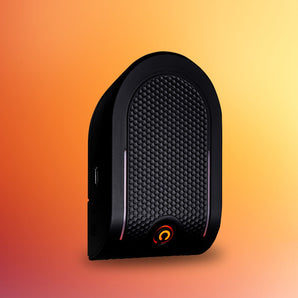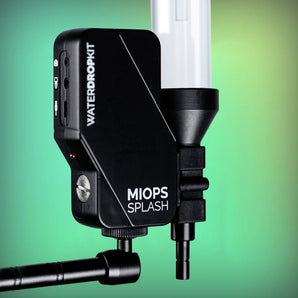During the last years,
Long Exposure Photography is a technique that’s become very popular. Images with blurred water or clouds streaking across the sky have become a common sight, and it’s not without a reason.
The technique results in a dreamy and often atmospheric image that’s beyond what we can observe with our naked eye. In this article, I’ll teach and guide you on what you need to know in order to capture beautiful long exposure images.
What is Long Exposure Photography?
Long Exposure Photography is a technique that takes use of a slow shutter speed. As long as the shutter is left open, the camera registers all movement within the frame.
The exact definition of when an image becomes a long exposure is slightly unclear but I prefer to describe it like this: an image becomes a long exposure when you no longer can take a sharp image handheld.
In other words, an image with a shutter speed of 1/40 sec can qualify as a long exposure, just as an image with an exposure time of 1 minute would.
Now, it’s important to understand that image will look different the longer or shorter the shutter speed is. Let’s take a look at the two images below as an example:
For the first image I used a shutter speed of approximately 1 second. As you can see, there are still a lot of textures and the image looks relatively normal.
In the second image, I used a shutter speed of 1 minute; this has resulted in blurry/silky water and clouds that are streaking across the sky. The camera has been registering movement for a much longer time than in the first example and the more movement there is, the more blurry/silky it becomes.
While we’re getting a into a little more advanced topic than suitable for an introduction to long exposure photography right now, it’s also important to understand how the shutter speed works in different scenarios.
What Equipment do You Need?
Before we get into the technical how-to part, let’s quickly look at what equipment this technique requires:
Camera with Manual Control: Since we are working with different types of shutter speeds, it’s crucial to have a camera that allows you to adjust the basic settings Aperture, ISO and Shutter Speed.
Most of today’s camera’s, including smartphones (with use of apps), allows you to do this. The exception is point-and-shoot cameras. Some of them do allow changes to some settings but in order for this technique to work as good as possible, you want to have full manual control.
Don’t worry, though, you don’t have to go out and purchase the most expensive DSLR camera right away; an entry-level camera will allow you to adjust what you need.
Tripod: The second essential tool is a tripod. This is something I consider essential for landscape photography in general but long exposure photography is nearly impossible without one.
Remember my definition of long exposure photography: an image becomes a long exposure when you no longer can take a sharp image handheld.
It’s not possible to get a sharp handheld image with a shutter speed of several seconds. The reason is that we make slight movements and aren’t able to hold the camera completely still.
By placing the camera on a tripod we remove camera shake and get images that are razor sharp.
Again, you don’t need the most expensive tripod but I recommend investing in something solid as this is a tool you’ll use a lot.
Remote Shutter: The next, and last, essential tool you need is a remote shutter. This is an essential tool for two reasons:
– It reduces the amount of camera shake
– It lets you use Bulb Mode.
First of all, a remote shutter reduces the amount of camera shake. Since you’re not physically touching the camera to take an image, you won’t cause any additional camera shake that can lead to blurry images.
If you want a shutter speed longer than 30 seconds you need to use Bulb Mode. This is a mode that keeps the shutter open as long as the shutter button is pressed. Manually pressing and holding it down for up to several minutes is guaranteed to result in camera shake (and a tired finger).
Neutral Density Filters: The final piece of equipment I’ll talk about in this article is Neutral Density (ND) Filters. While it is possible to do long exposure photography without filters, they are considered an essential part of this technique.
In short, ND Filters are darkened filters that you place in front of the lens. These darkened filters reduce the amount of light entering the camera and forces you to use a slower shutter speed in order to achieve a well-exposed image.
These filters are especially important when you want to achieve a slow shutter speed during daytime or brighter hours.
How to Capture a Long Exposure
After reading this far, you might already have an idea how to capture a long exposure photograph but let’s go through it step-by-step to make it clear.
1. Find your composition
2. Lock the camera on to a tripod
4. Place the ND Filters in front of the lens (optional)
5. Calculate/Adjust the settings with a shutter speed of more than 0.5sec
6. Use your MIOPS (Press&Lock or Timed Release Modes are perfect for this) or other remote shutter to take the image
That doesn’t sound too difficult, does it?
The most difficult part of long exposure photography is to find the correct shutter speed, especially if you’re using filters. Luckily, there are several tools that makes this easy for you. For example, in the MIOPS Mobile application for your smartphone, you can easily calculate the correct shutter speed. This is done by inserting the current shutter speed and which ND Filter you’re going to use; the app then calculates the correct shutter speed you should use.
If you’re not used to manually adjusting the settings this might time some time to get used to and fully understand but practice makes master. I’ve witnessed several “a-ha” moments on my workshops when the participants realize just how easy it actually is!
Mistakes to Avoid
While you’ll soon realize that long exposure photography is a pretty straightforward technique, I want to quickly shed light on a few mistakes you should be aware of.
It’s very typical that people become hooked on this technique and use it in every single scenario: this is not necessary! It is a fun and creative technique but the harsh truth is that it doesn’t always work.
Long exposure photography is an amazing technique when there’s moving elements the image. I.e. this is a technique that can be beneficial when there’s moving water, clouds, cars, people or perhaps even wind that creates motion in grass or trees.
When the scene lacks any motion, it’s not a beneficial technique. If you’re photographing a field without motion during a cloudless day, there’s no need to use a long exposure.
The second mistake I often see is that people get stuck to only using a 10-Stop ND Filter and a shutter speed of several minutes. While this can result in great images, I urge you to explore with different shutter speeds in different scenarios. For example, a waterfall might look just as good with a 1 second shutter speed.
Lastly, avoid using auto-focus in combination with ND Filters. Since you’re placing dark filters in front of the lens, it’s nearly impossible for the camera to properly focus. Instead, focus before inserting the filters and switch it to Manual Focus – this will give you much sharper images!
That’s it. Now I challenge you to go outside and experiment with a slow shutter speed!
About the Author
Christian Hoiberg is a full-time landscape photographer who helps aspiring photographers develop the skills needed to capture beautiful and impactful images. Download his free guide 30 Tips to Improve Your Landscape Photography and open the doors to your dream life.
















